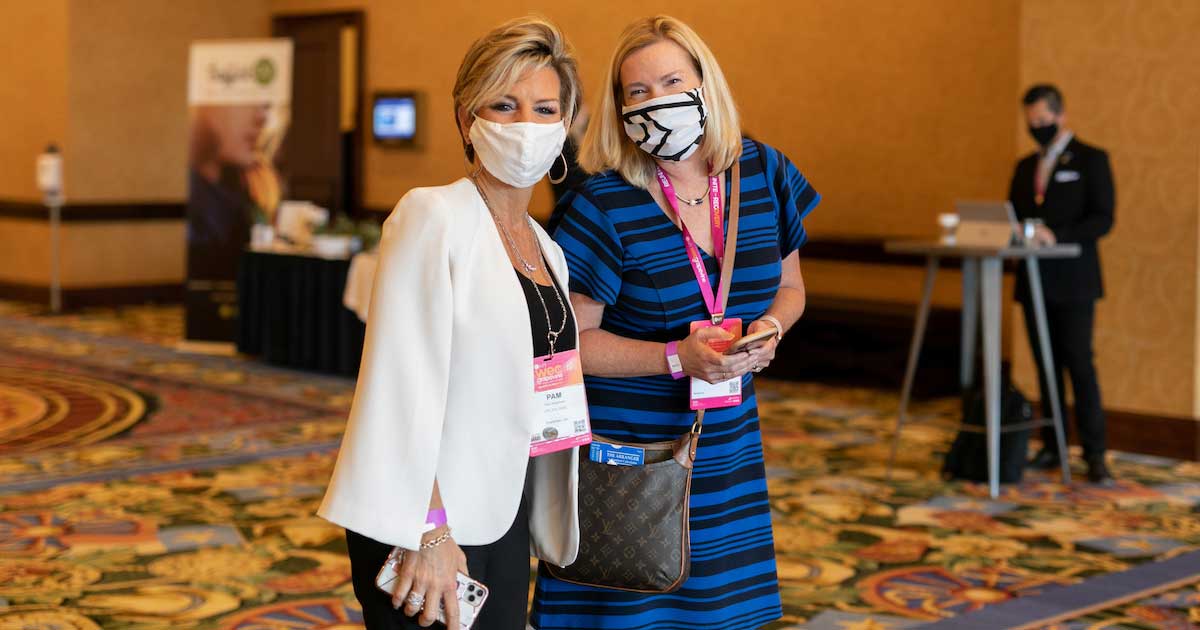As hybrid meetings emerge in 2021 and 2022, organizers should proceed with caution into the new normal.
In a recent presentation to the Association of Performing Arts Professionals, Dr. Anthony Fauci, director of the U.S. National Institute of Allergy and Infectious Diseases, predicted that theaters, concert halls, convention centers and public facilities will begin operating with larger audiences in the fall of 2021. With the promise of herd immunity achieved through vaccines, planners will have more confidence booking events into late 2021 and 2022.
Despite this good news, the pandemic has changed the meeting industry for the foreseeable future. Consumers, in general, have become more comfortable working from home, and many prefer to not only work in that space but also shift other activities to home, from fitness routines to cooking classes to continued education.
What we can’t duplicate virtually: social events with physical interactions and mutual enjoyment of music, art, comedy, theater and dance in a gathered space. Networking and stress-reducing entertainment interactions foster collaboration, healing and hope. While considered in 2020 as “nonessential,” they are the therapeutic elements that will help provide planners with more engaging programming as well as incentives for attendance.
“With the promise of herd immunity achieved through vaccines, planners will have more confidence booking events into late 2021 and 2022.”
As was recently witnessed at U.S. President Joe Biden’s inauguration, both live and virtual use of a variety of diverse artists (pop, Latin, country and poetry) can provide inspiration and greatly enhance overall programming.
While there will undoubtedly be pent-up demand to network in person, there will also be emotional obstacles that will require a new kind of motivation to get people to return to larger gatherings. Because of unemployment in many industries, there will also be barriers for many individuals, sponsors and organizations taking on financial commitments necessary to return to live trade shows and events, especially those that involve air travel to a destination city.
In transition, hybrid, hyperlocal events will take center stage. Events that are local with a virtual component will offer local attendees lower risk experiences without the added cost of travel. Vaccinated attendees in older age groups and healthcare workers will return in small, socially distanced settings as will workers in other industries. Compromised industry workers and ethnic groups that have suffered the most from illness, isolation and stress during COVID-19 will be seeking programming that offers an opportunity to socialize in a safe environment and tell their stories to a wider audience than just family and close friends.
Millennials and Generation Z workers who are most comfortable with virtual technology and conducting business online will still have a strong desire to attend social programs with live bands, comedy and networking opportunities. The best planners will provide a combination of offerings that will appeal to diverse groups, needs and interests, post-pandemic.
“Events that are local with a virtual component will offer local attendees lower risk experiences without the added cost of travel.”
Multipurposing talent makes economic sense to appeal to varying tastes and to maximize ROI. When booking talent, it is important to contract a “package deal” to cover both live and virtual components of your hybrid program. Choosing the right talent booking partner that has proven abilities working in both mediums will produce the best results.
Thinking “outside of the box” for hyperlocal live programming does not mean breaking the budget. Smaller live events allow more personal interaction than virtual gatherings. For those willing to pay the price for a live experience, enhance value by incorporating premium food, a memorable venue and a “wow factor” entertainment offering to create an incentive worth your attendees’ investment. Select your venue with maximum delight and surprise in mind. Consider unique spaces that cannot be duplicated in traditional convention centers and hotel ballrooms.
Strong incentives must be in place to make the agenda as engaging as possible, through the wise use of keynote speakers and talent, both local and national. If booking a live celebrity is not in the budget, consider adding one or more as an attraction on your virtual platform who can also interact on large screens with those attending the meeting in person.
One of the main complaints of convention attendees and sponsors in the years before the pandemic was spending too many hours in the ballroom or on the trade show floor and never really experiencing the destination city. With that in mind, bring the destination city to your participants by supporting fantastic local restaurants, local theater groups and city landmarks they likely will not experience otherwise. Take attendees on a journey within their own city to an undiscovered gem or uniquely themed experience. Add in a virtual element to this local programing to expand your audience even further.
Once attendees build comfort levels through incentives to attend hyperlocal programming, they will be much more likely to take the next step to return to larger hybrid programs and national and international conventions.



